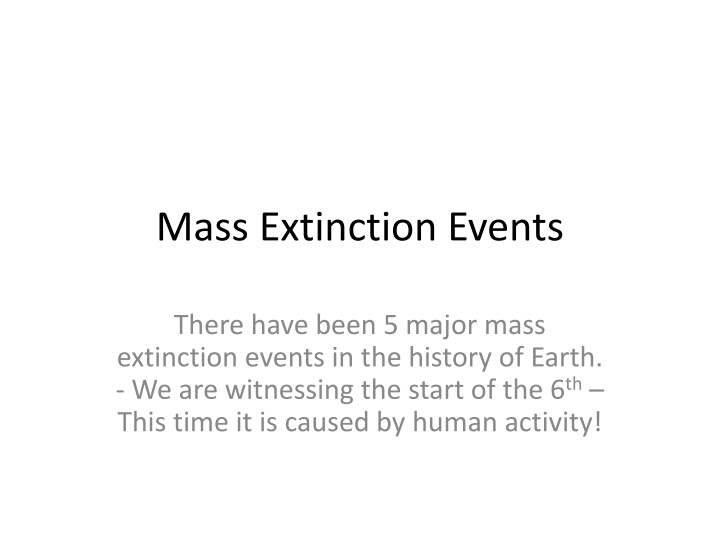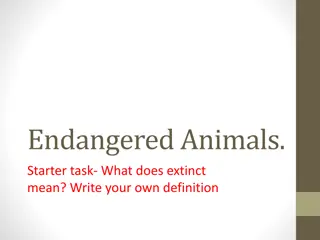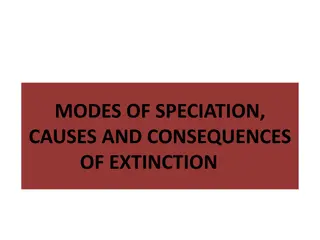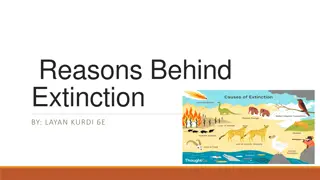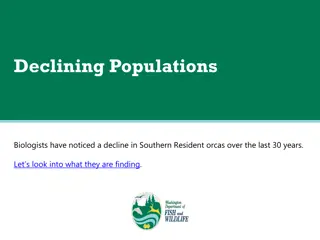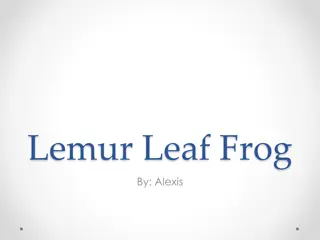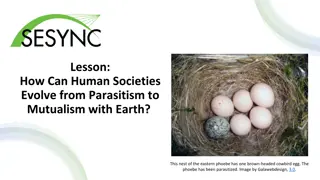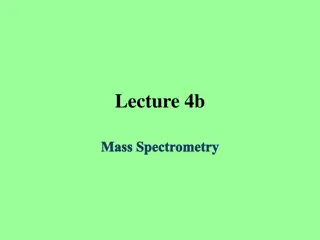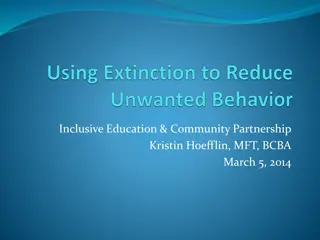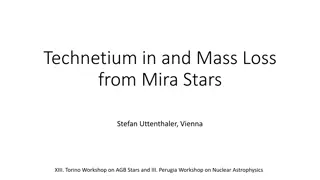Earth's History: Mass Extinction Events and Human Impact
Earth's history spans over billions of years, marked by significant events including mass extinction events that have shaped life on the planet. There have been five major mass extinction events in the past, with the sixth one currently underway, driven by human activities impacting the environment. Each extinction event had distinct causes and effects on biodiversity, highlighting the fragile balance of life on Earth.
Download Presentation

Please find below an Image/Link to download the presentation.
The content on the website is provided AS IS for your information and personal use only. It may not be sold, licensed, or shared on other websites without obtaining consent from the author.If you encounter any issues during the download, it is possible that the publisher has removed the file from their server.
You are allowed to download the files provided on this website for personal or commercial use, subject to the condition that they are used lawfully. All files are the property of their respective owners.
The content on the website is provided AS IS for your information and personal use only. It may not be sold, licensed, or shared on other websites without obtaining consent from the author.
E N D
Presentation Transcript
Mass Extinction Events There have been 5 major mass extinction events in the history of Earth. - We are witnessing the start of the 6th This time it is caused by human activity!
History of Earth Earth in born - 4.54 billion years ago Earth surface hardens - 4 billion years ago Life emerges on the planet - 3.8 billion years ago Hominid species differentiate from apes - 6 to 8 million years ago Homo Erectus stands up - 1.7 million years ago Neanderthal Man appears - about 400,000 years ago Homo Sapiens (us) appears in Africa - about 300,000 years ago Homo Sapiens migrates to Southeast Asia and the Middle East - about 100,000 years ago Human "Civilization" begins - 10,000 years ago The Industrial Revolution's devastating impact on the Global Climate becomes obvious - 100 years ago
List of the first five Ordovician-Silurian 70% of all species became extinct 450 Million Years Ago Late Devonian 70% of all species became extinct 375 million years ago Permian-Triassic 95% of all species became extinct 150 Million Years Ago Triassic-Jurassic 75% of all species became extinct 200 Million Years Ago Cretaceous-Paleogene 75% of all species became extinct 66 Million Years Ago
Number 1 Ordovician-Silurian 70 to 85% of all species became extinct 450 Million Years Ago Probable Cause: Extensive volcanism initiated a rapid and short ice age. Glaciation resulted in sea level fall and most life lived in the sea. Oxygen levels in the sea plummeted. Toxic metals in the sea floor dissolved in the sea water.
Number 2 Late Devonian 70% of all species became extinct 375 million years ago Most life was still in the sea, but land mass plants and insects had appeared Most probable cause: Plate shifts, volcanism, and sea anoxia (lack of oxygen) associated with global cooling.
Number 3 Permian-Triassic 95% of all marine species and 70% of all terrestrial vertebrate species became extinct 250 Million Years Ago Possible causes: Volcanism, sea anoxia, and sudden release of methane from the sea floor. Major impact event from large asteroid
Number 4 Triassic-Jurassic 75% of all species became extinct 200 Million Years Ago Possible causes of associated intense global warming: Volcanic activity Asteroid impact
Number 5 Cretaceous-Paleogene 75% of all species (including almost all non-avian dinosaurs) became extinct 66 Million Years Ago Probable causes: Volcanic activity Asteroid impact
Number 6 Holocene (Anthropocene) Degree of extinction yet to be determined Began about 10,000 years ago when homo sapiens became civilized and is currently ongoing The causes of 1 through 5 are understood with varying degrees of certainty. The cause of 6 is the result of human activity; Anthropogenic Global Warming , and the associated Climate Change. Humans have existed only for the last 200,000 years or so and Human Civilization began on about 10,000 years ago. It is highly probable that the number of species that become extinct will be nearly total and humans almost certainly will not survive. Dramatic mitigation activity by humans could disrupt the trend but when the atmospheric CO2 concentration reaches 6 degrees C above preindustrial levels the extinction is virtually certain. We are nearing 2 degrees now and the trend continues upward.
